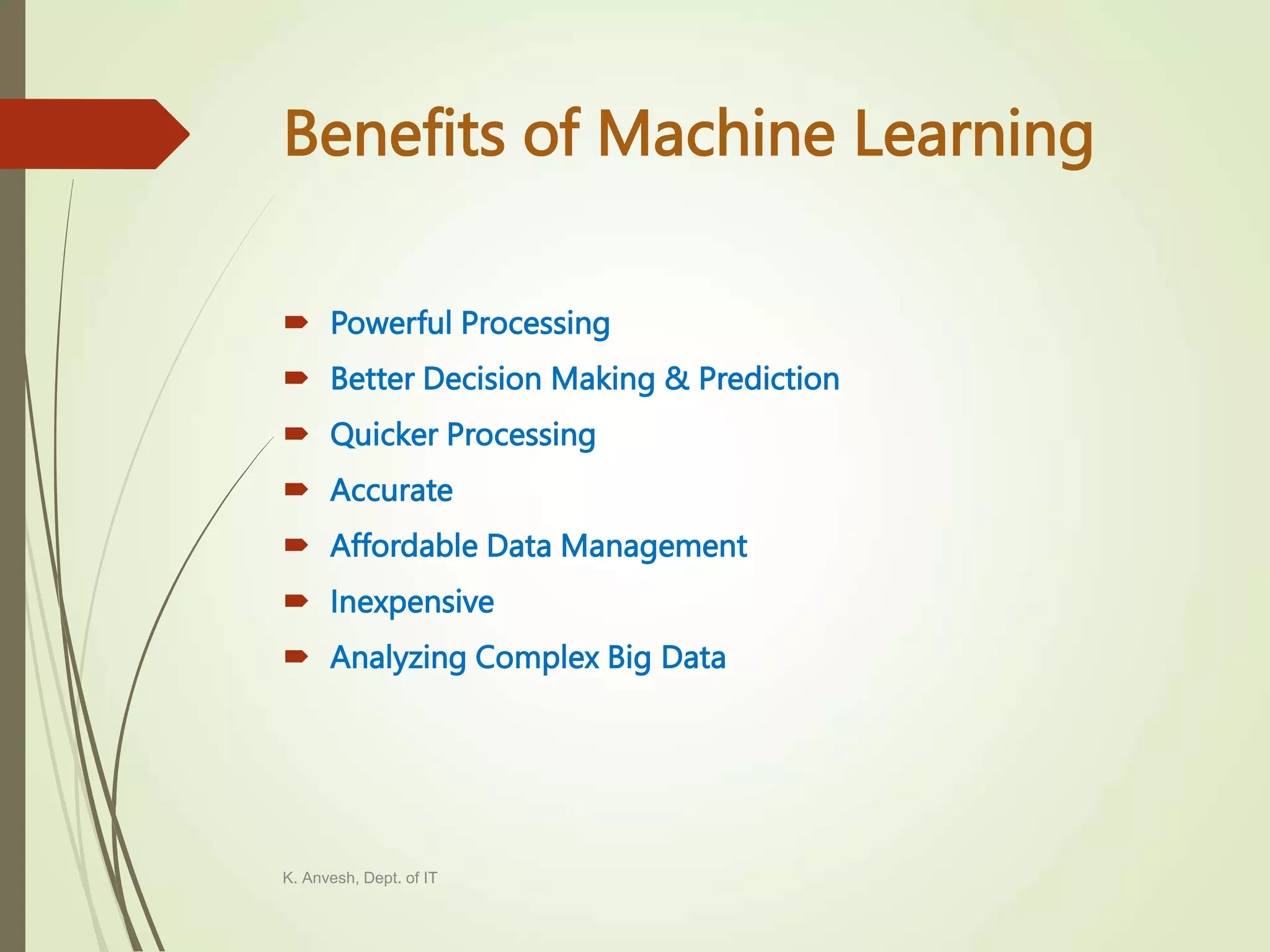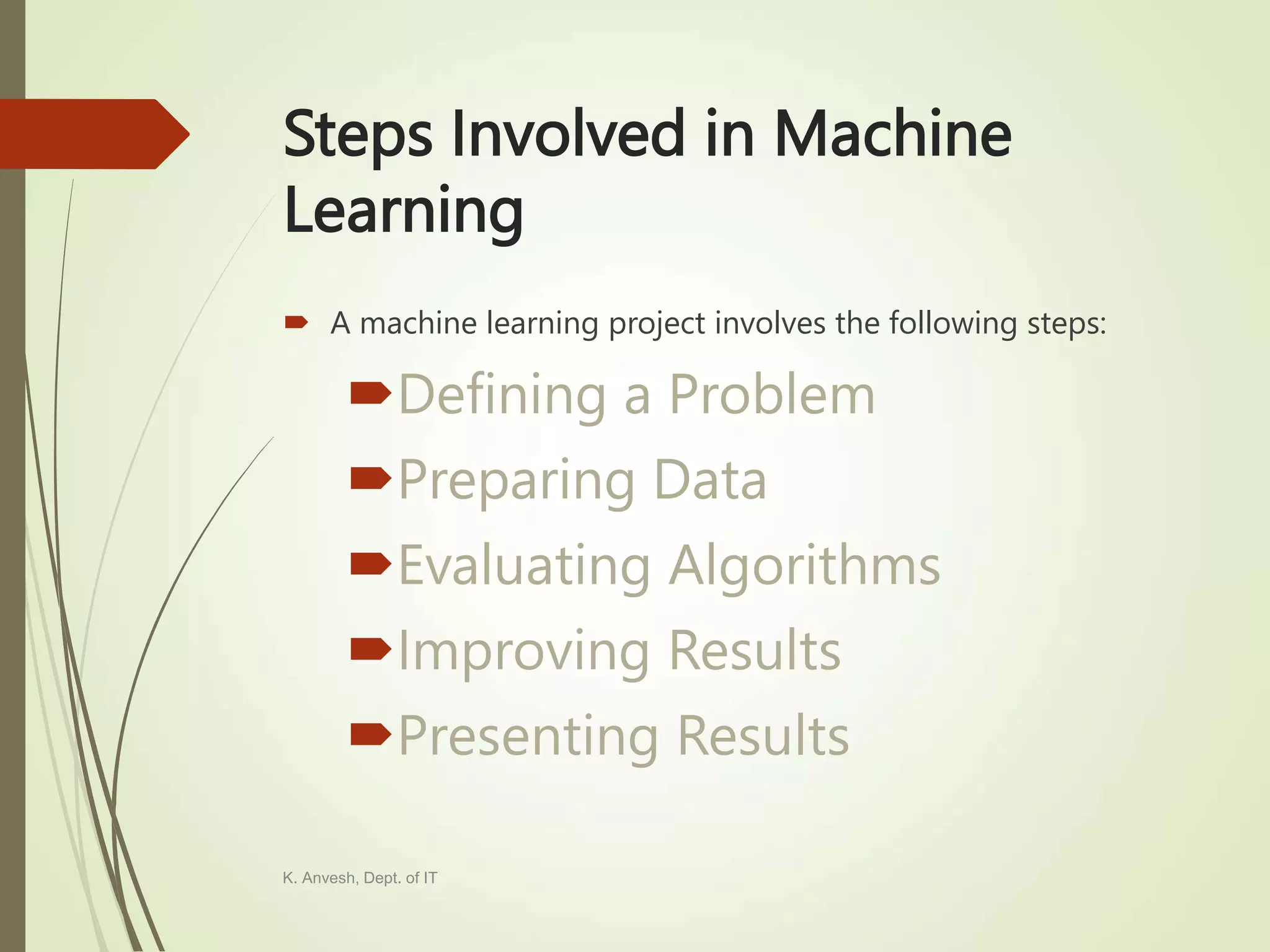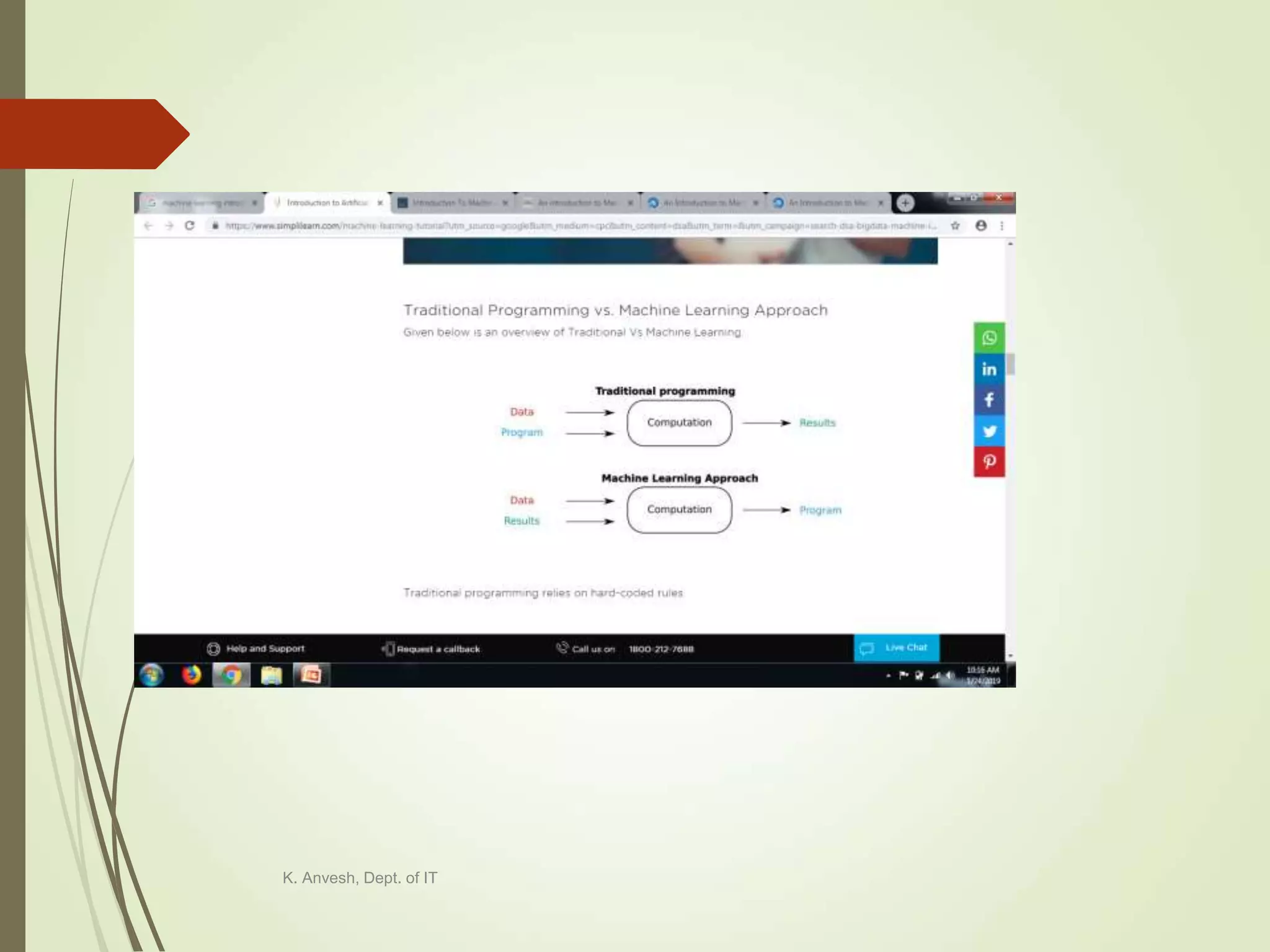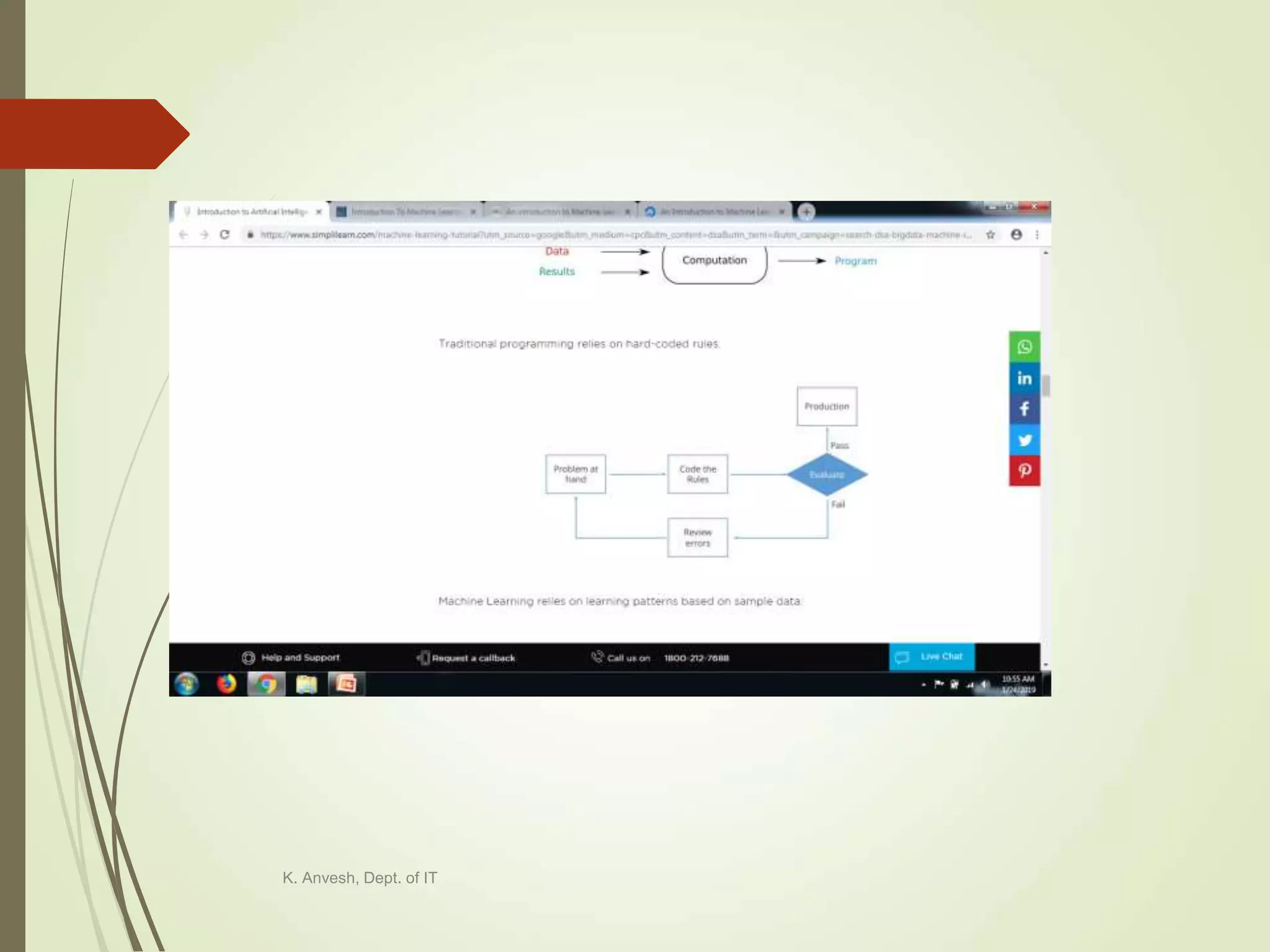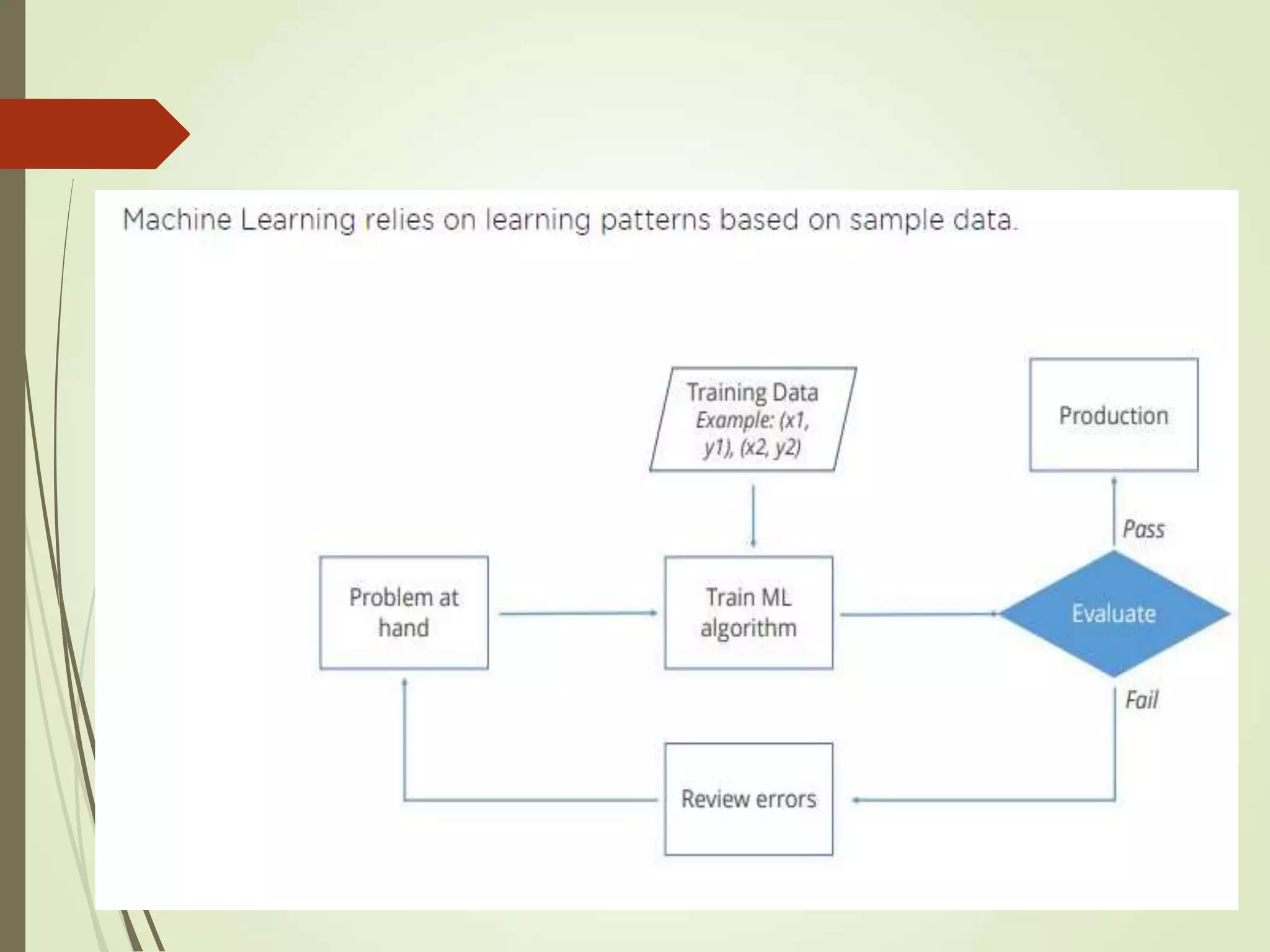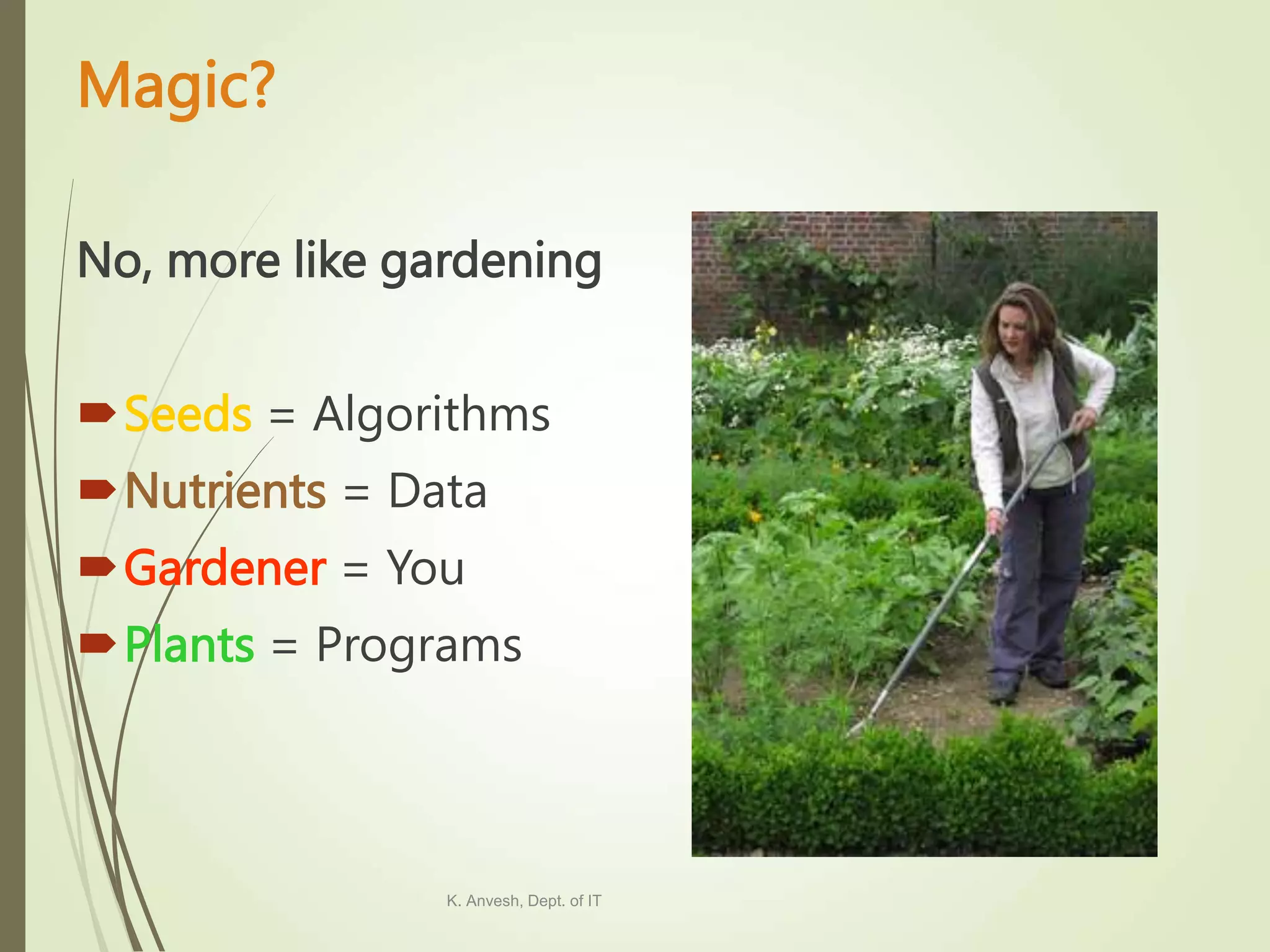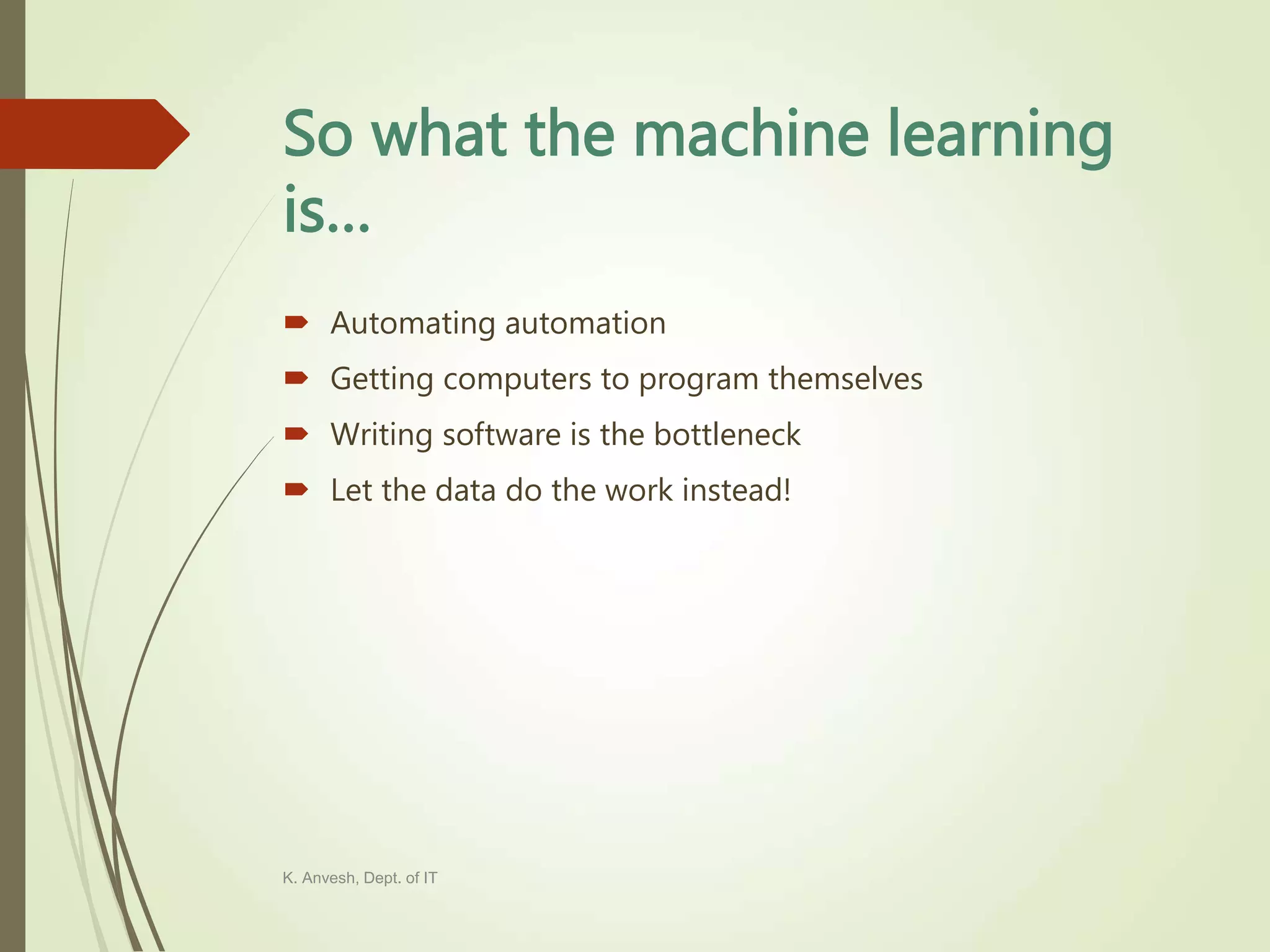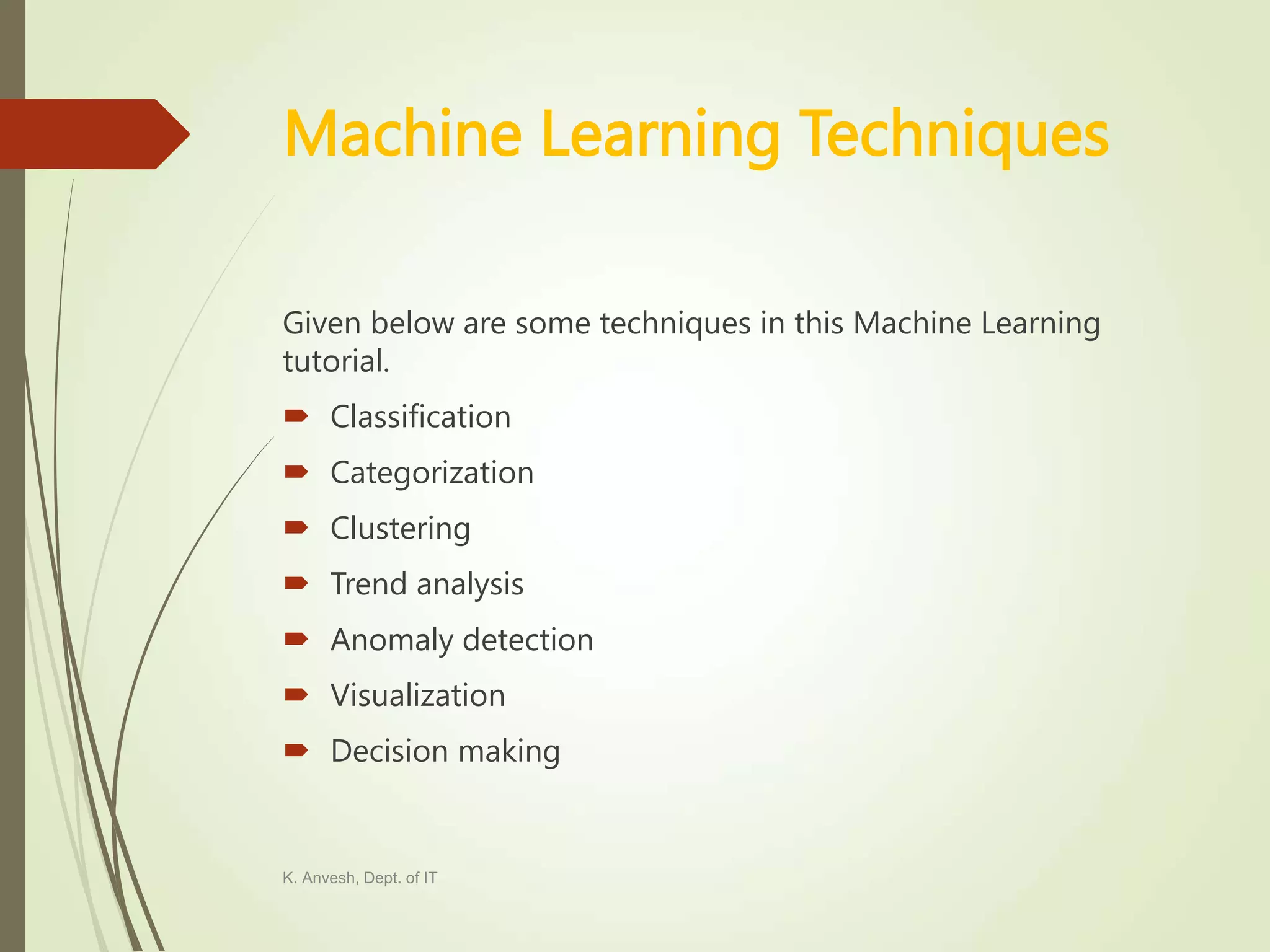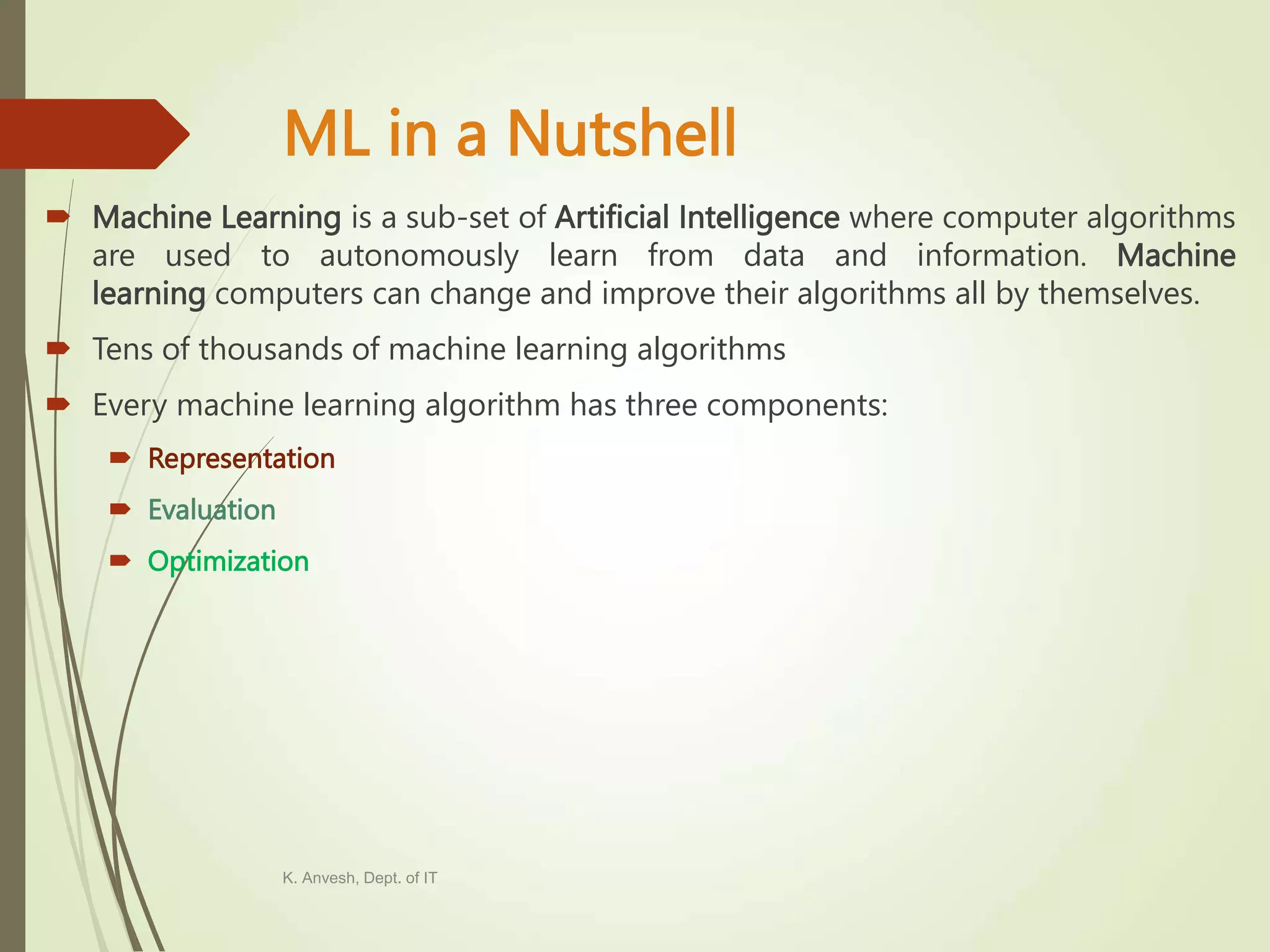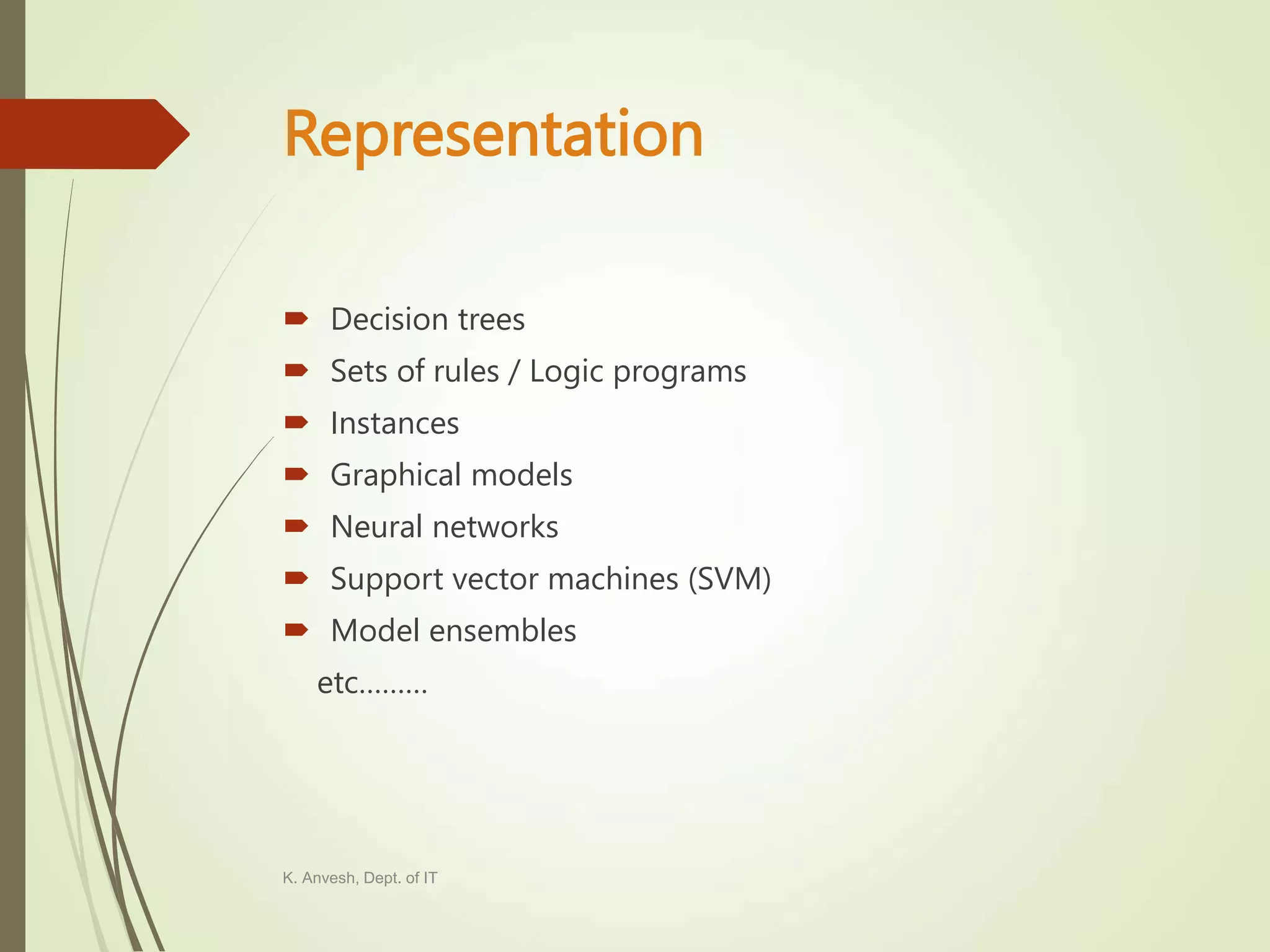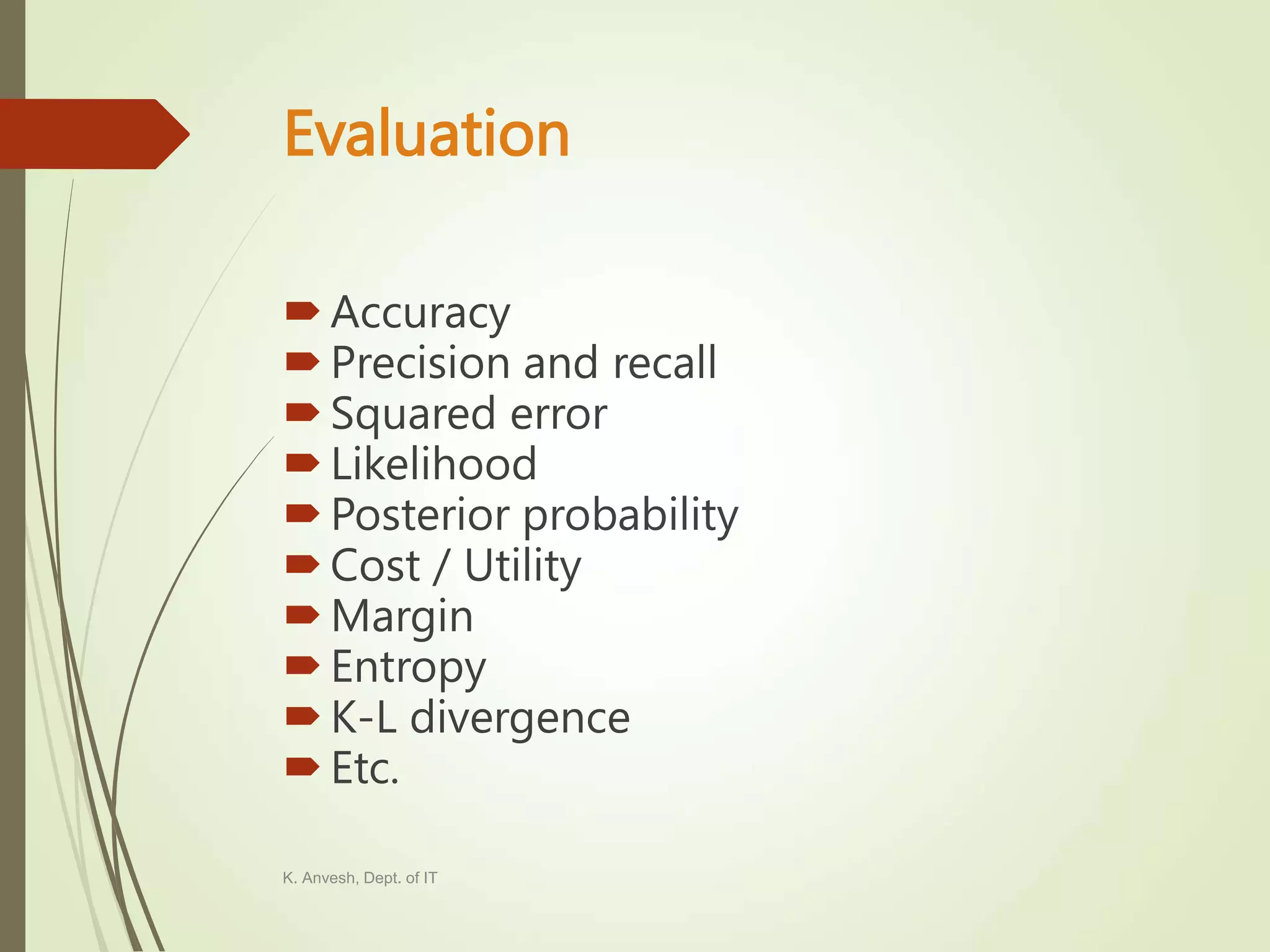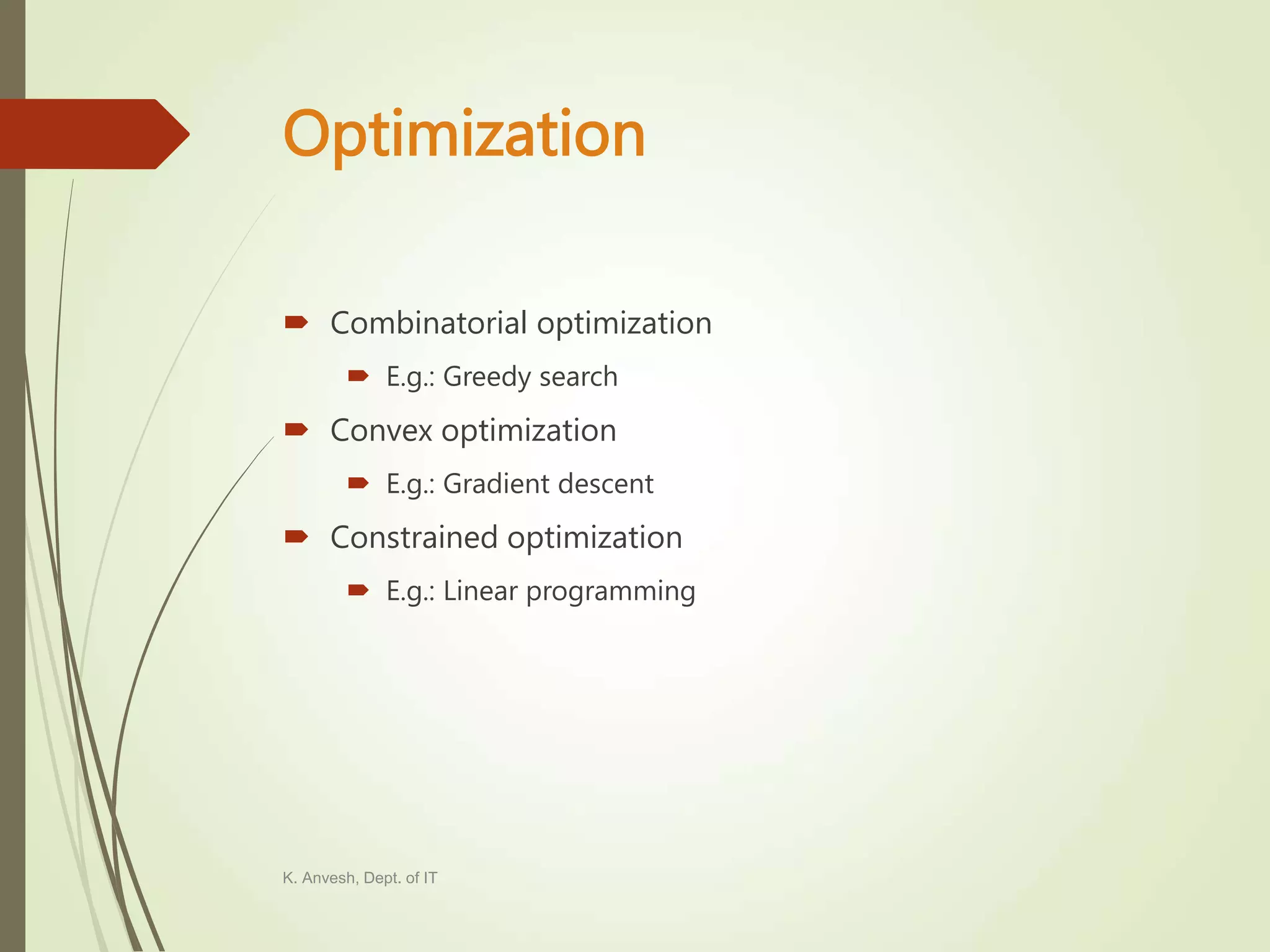This document discusses machine learning and its implementation using Python. It begins with an introduction to machine learning, including definitions of supervised and unsupervised learning. It then discusses how Python is commonly used for machine learning tasks due to its many relevant libraries. The document provides overviews of popular machine learning techniques like classification, regression, and clustering. It also discusses steps involved in a machine learning project and benefits of machine learning like powerful processing and better decision making.
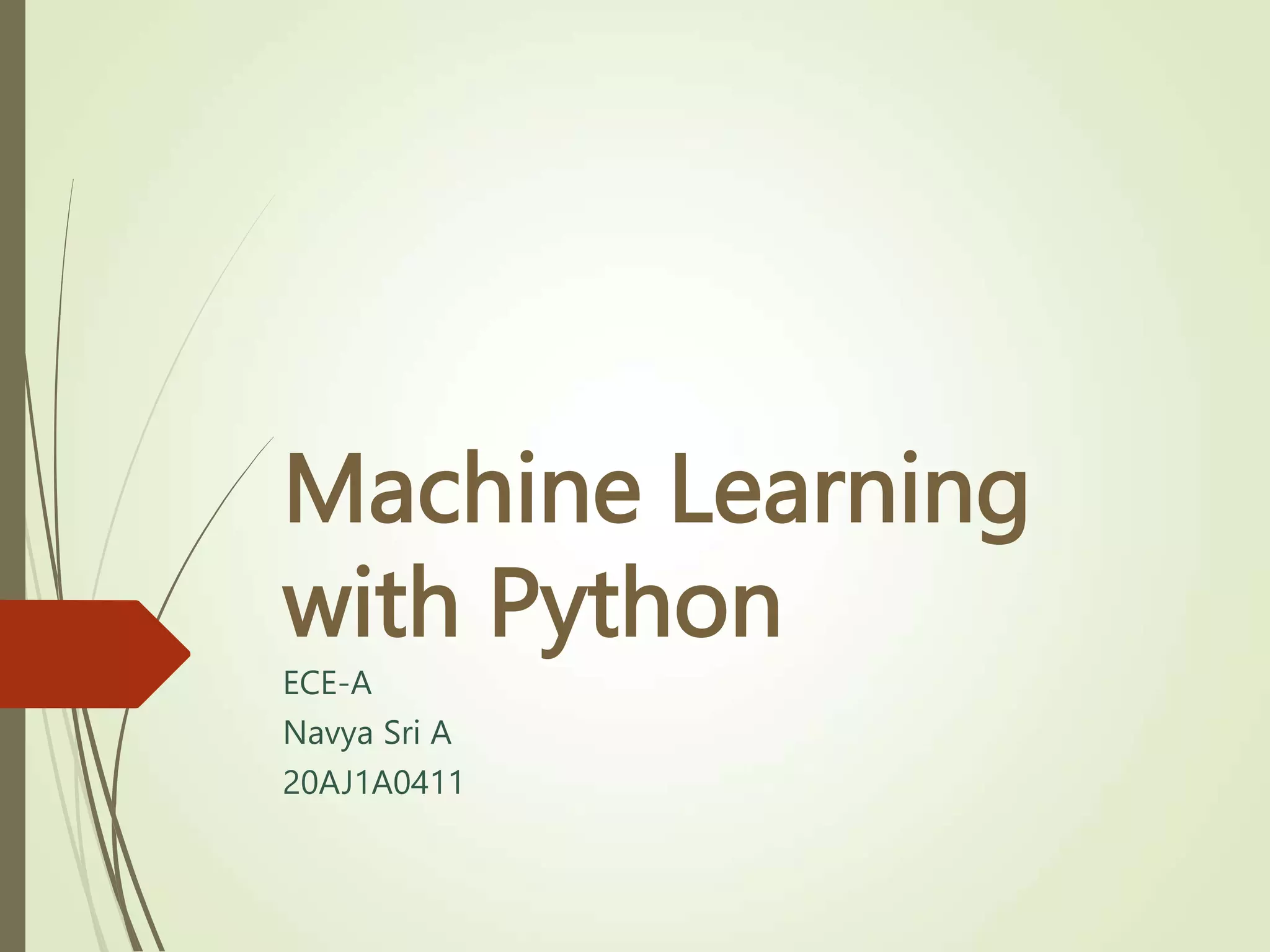
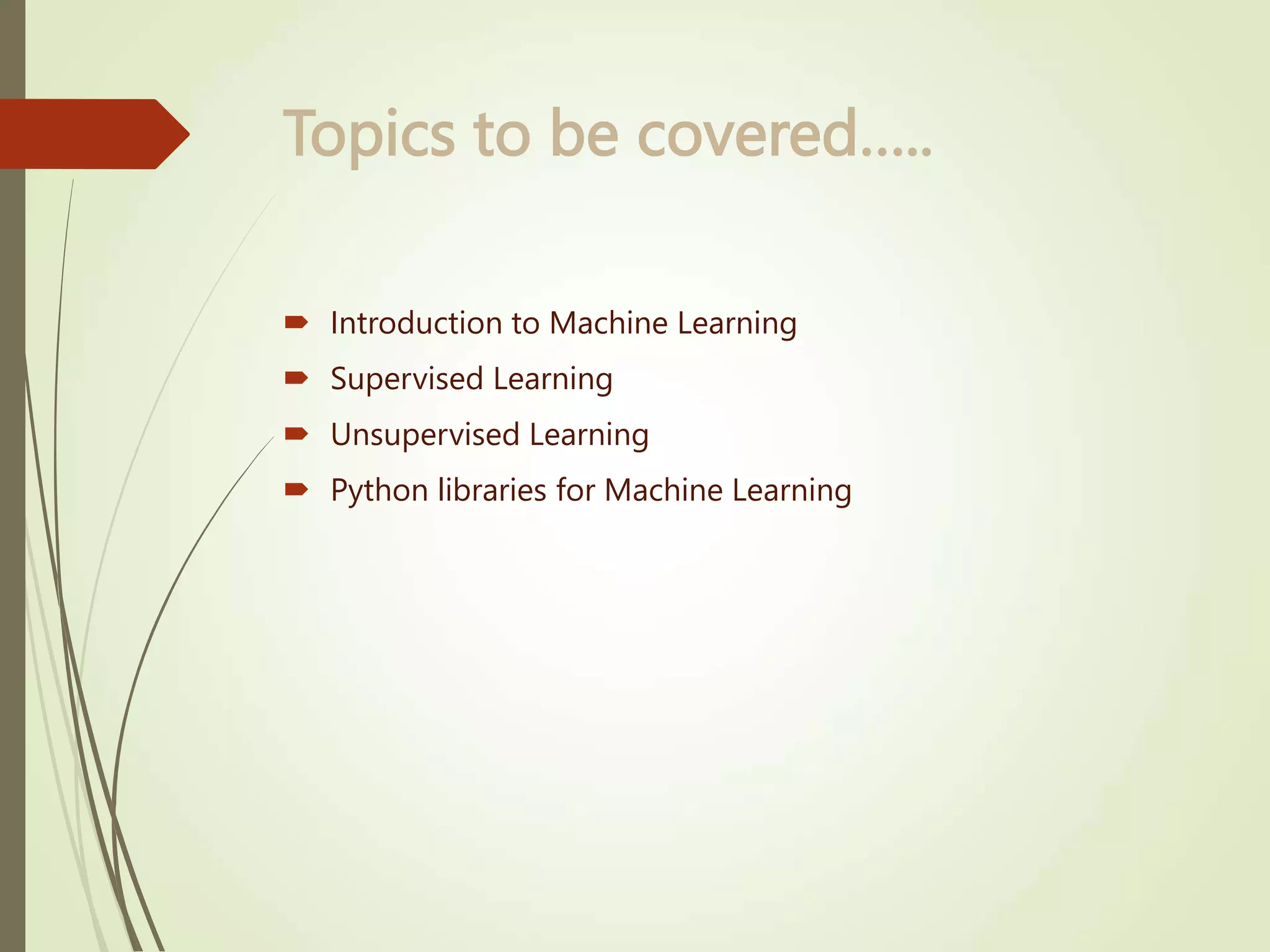
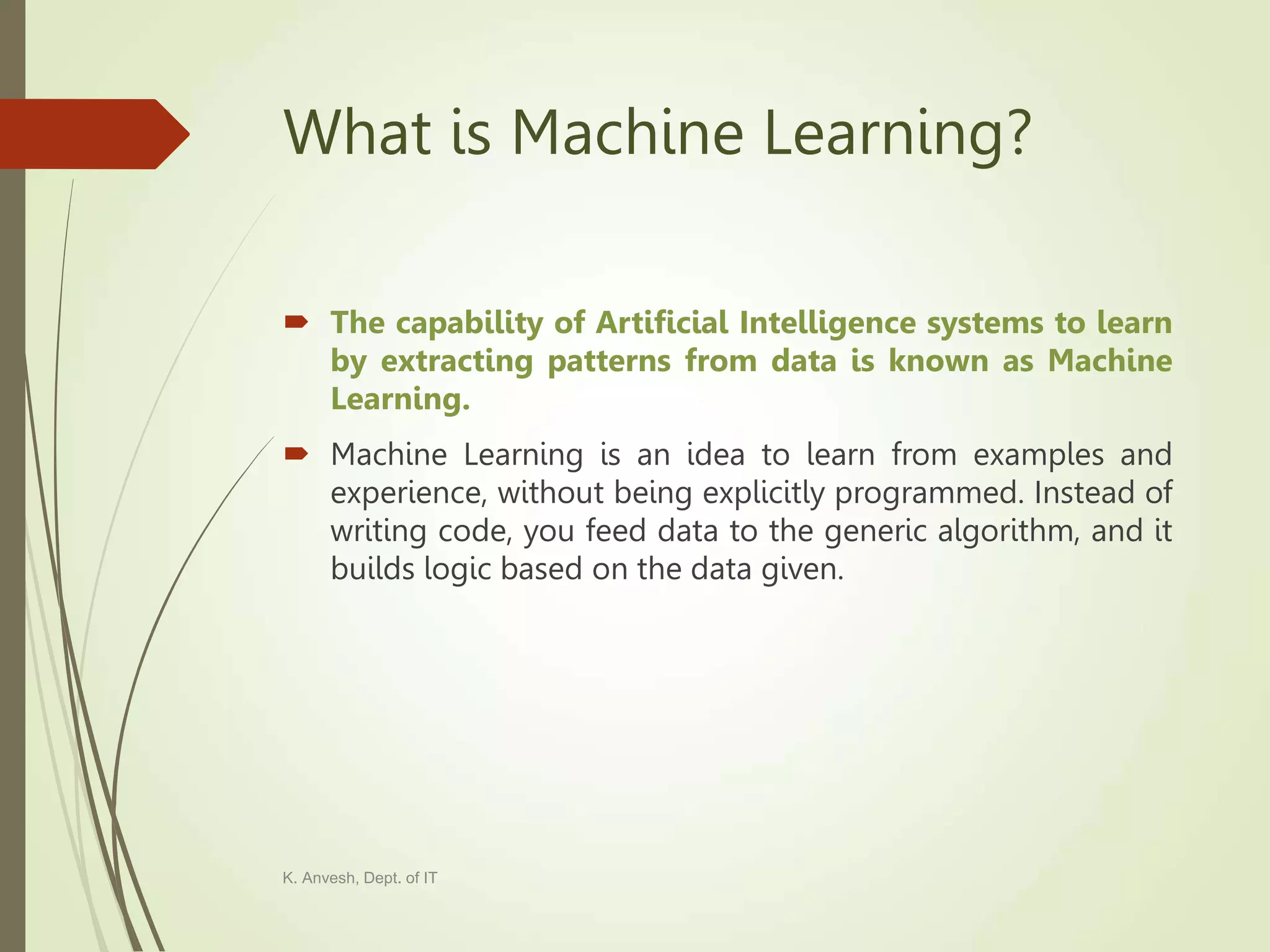
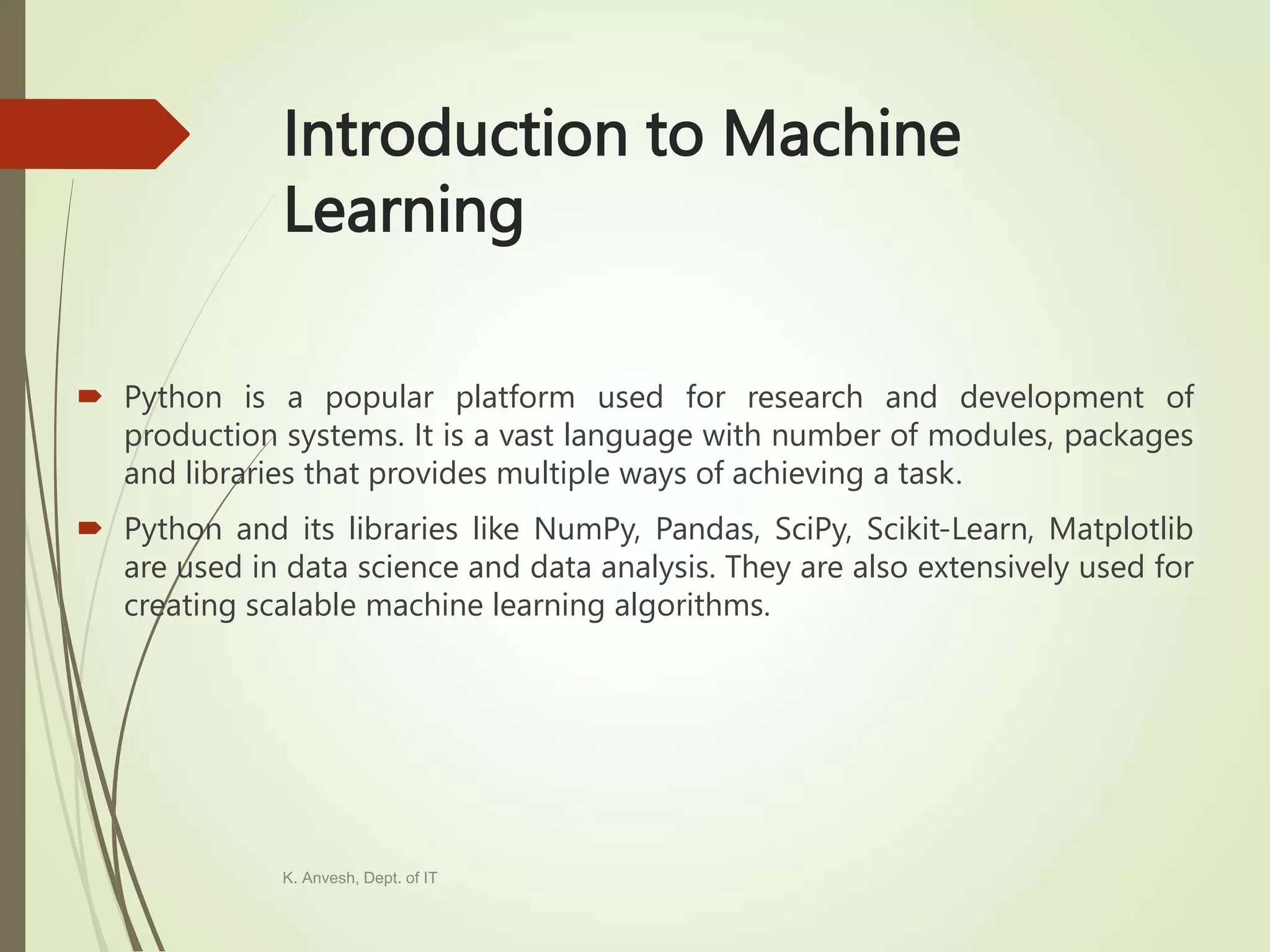
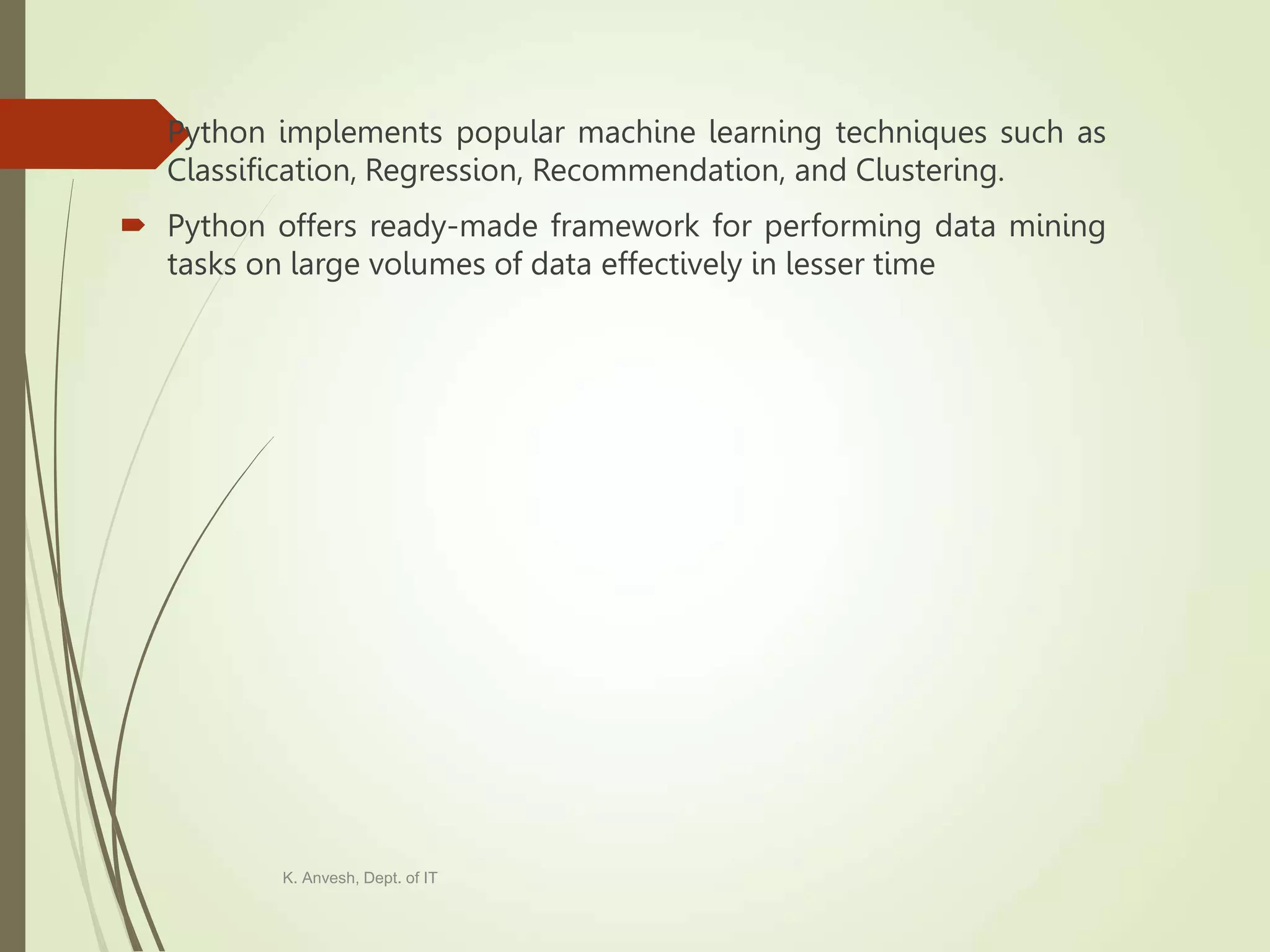
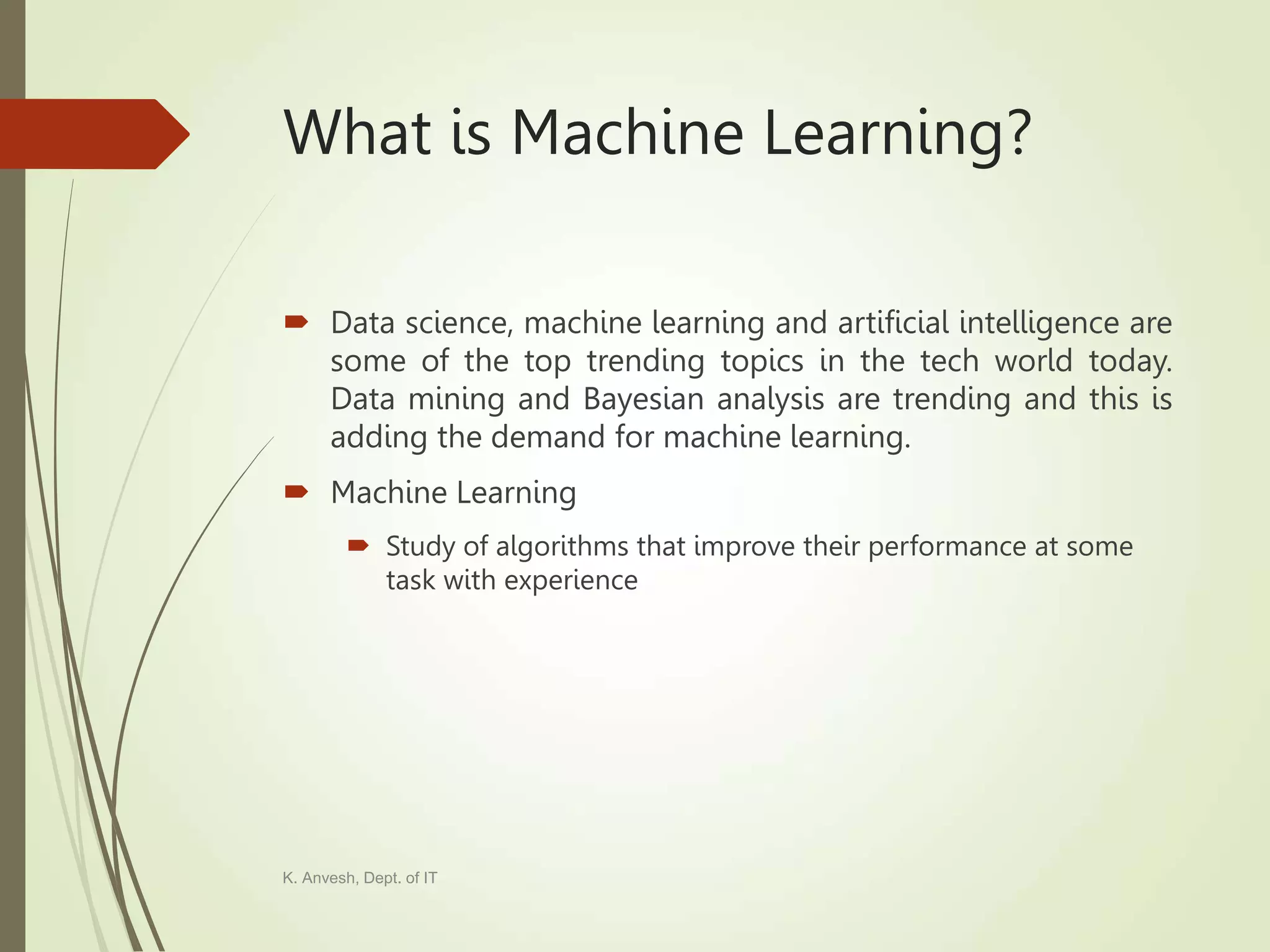
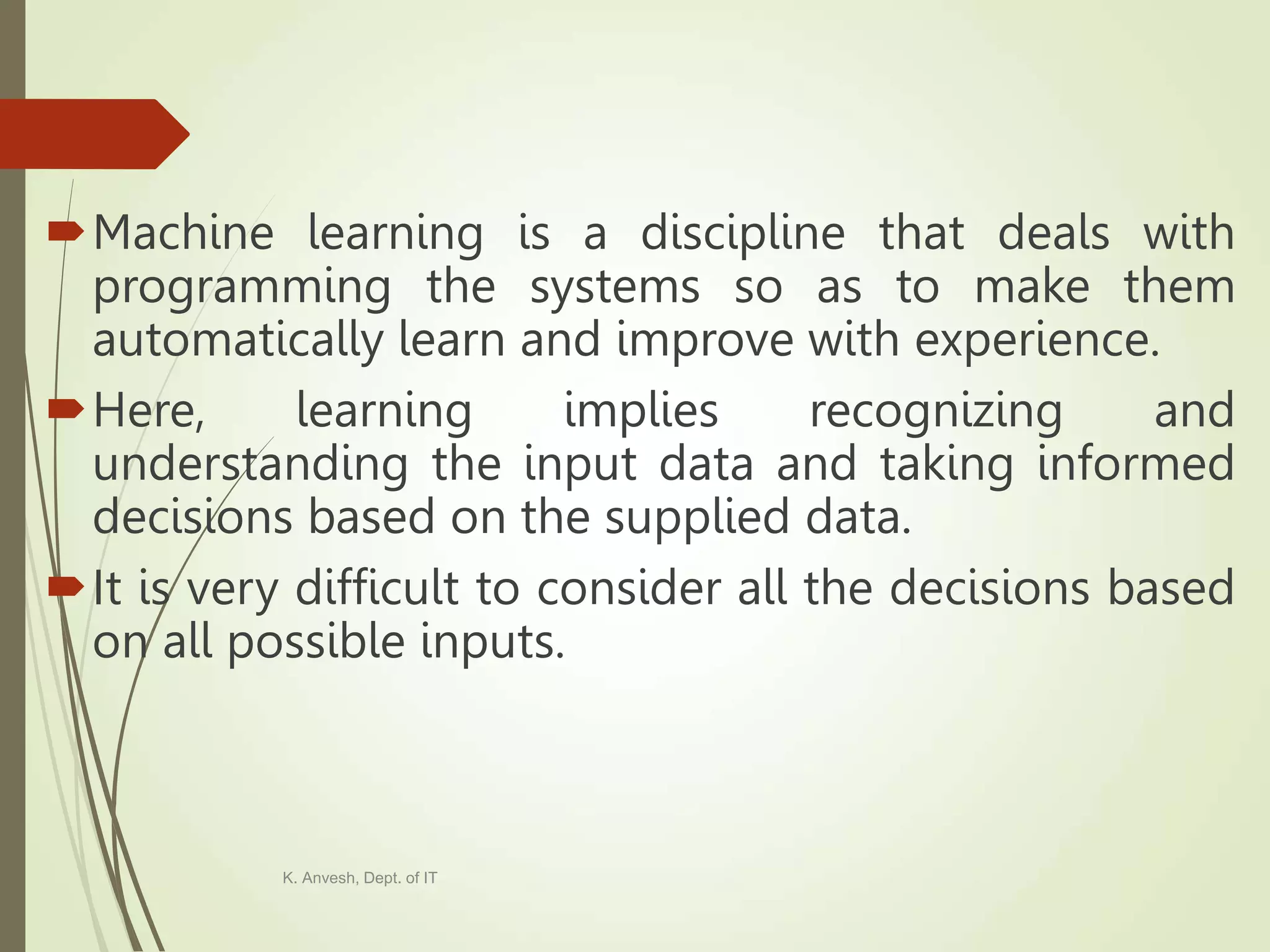
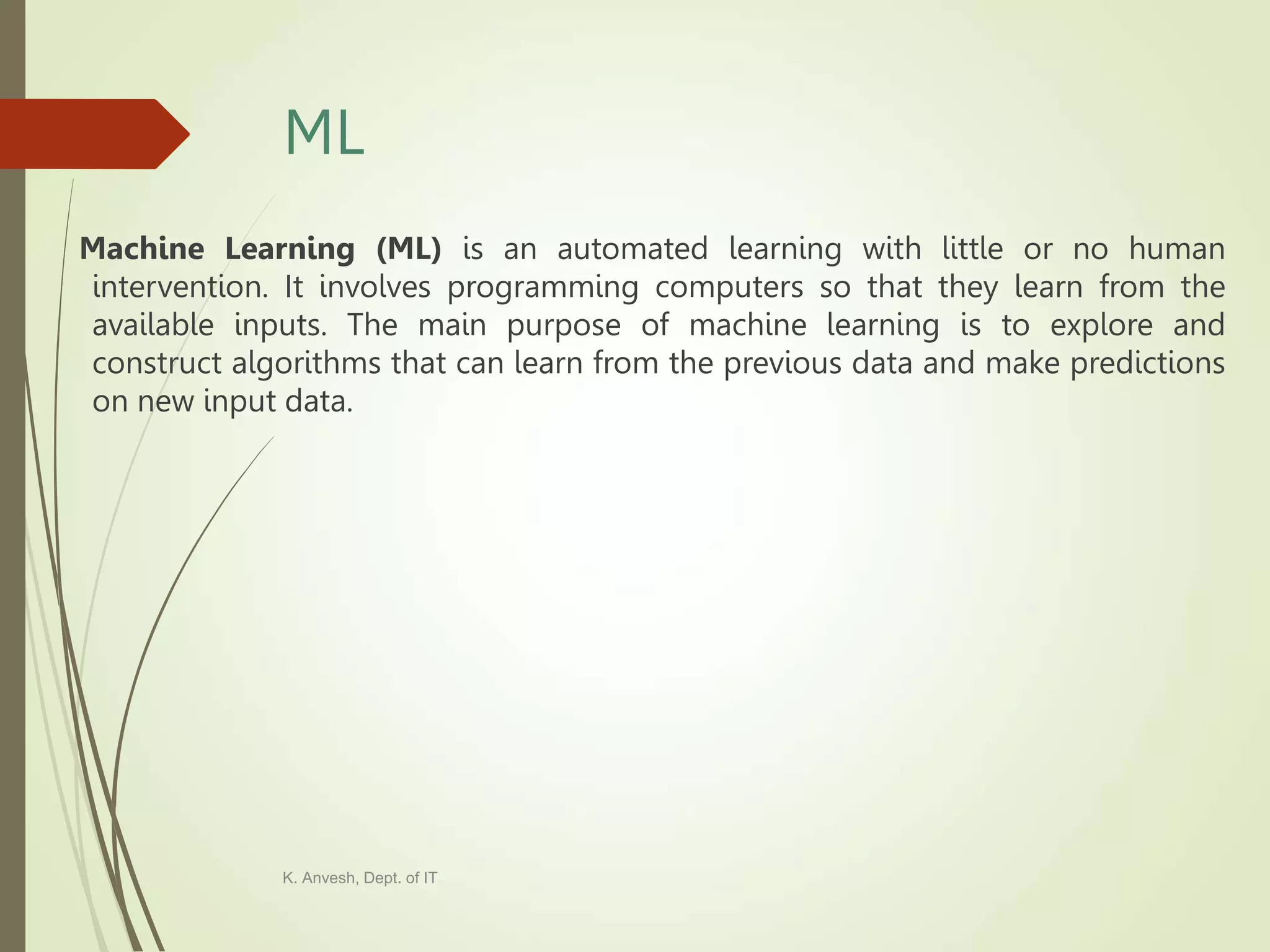
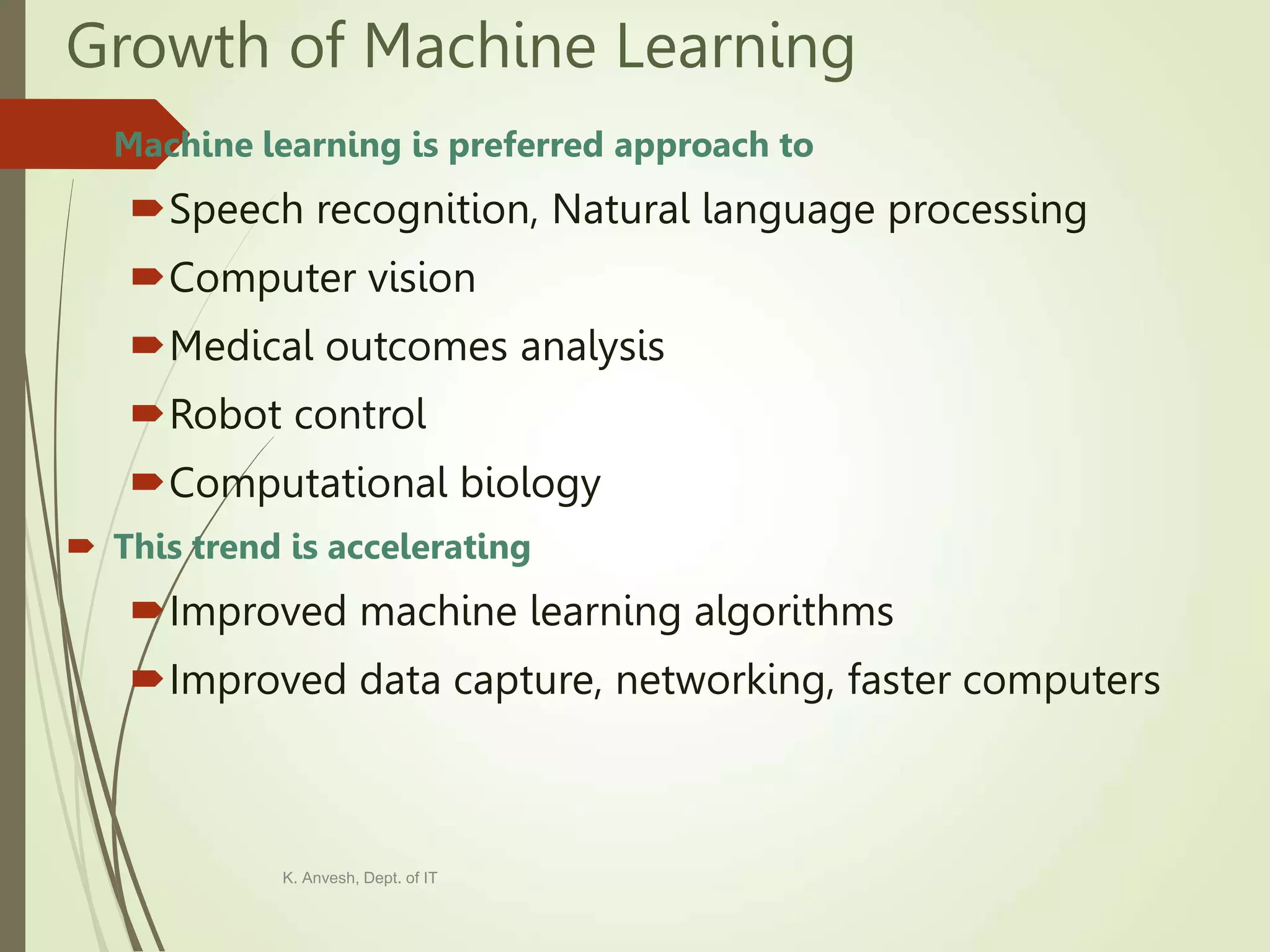
![Applications of Machine Learning Algorithms The developed machine learning algorithms are used in various applications such as: K. Anvesh, Dept. of IT Web search Computational biology Finance E-commerce Space exploration Robotics Information extraction Social networks Vision processing Language processing Forecasting things like stock market trends, weather Pattern recognition Games [Your favorite area]](https://image.slidesharecdn.com/machine-learning-with-python1-221222115246-8da9a1cc/75/machine-learning-with-python-1-ppt-10-2048.jpg)
